
Tips For Renovating an Older Home
Older homes have significant advantages. Their locations are in walkable communities with established trees that give a real sense of pleasure in living there. Many older homes can have 'good bones,' meaning they were solidly constructed, and often are quite beautiful. For historic homes, see our related article on Heritage Homes and Sustainability.
An older home can also be hard to keep comfortably heated and cooled and can have high energy bills. It's an excellent opportunity to improve sustainability and cut your energy bills if you are looking to renovate. Here are a few tips.

Tip #1 – Get a Home Energy Assessment
It's essential to get your home assessed for energy efficiency before you start renovating. The assessment measures your home's baseline energy consumption and shows you where energy and money are lost. It also helps you identify the best changes that will make your home more comfortable and cut your energy costs.
In Canada, look for a certified Home Energy Advisor. They will evaluate your home using the EnerGuide for Houses rating system. This report gives you a detailed report on how much heat, cooling, and appliance energy the building needs now. It shows how much you can save if you make specific improvements like insulation, air sealing, and window replacement. In the US, the same kind of assessment is called the Home Energy Rating System (HERS). Many other countries have similar assessment systems.
The cost of an energy assessment is money well spent, especially for an older home. The assessor does a blower door test to help you find air leaks, and may even use thermal imaging to find uninsulated spaces in walls and ceilings. The results can be quite surprising. Often some part of a basement, or a hidden gap in the insulation, can be costing you more energy than the more obvious things like windows.
An enjoyable part of a home energy assessment is the blower door test. This big fan blows air out of the house, to measure how drafty it is and help you find the holes where a draft is coming in. You can go around the house and feel the air coming in around baseboards, trim, and electrical outlets, even where you would not have expected it.
A home energy assessment is also your key to accessing energy efficiency incentives, like grants, rebates, and low-interest loans. Browse Rise's Rebate Finder for local governments and organizations that offer rebates. You need to have an assessment before you do any renovation work and another one after the renovations. A bonus is that some incentive programs will refund you a portion of the evaluations' cost if you make improvements.

Related Products
Shop Related Products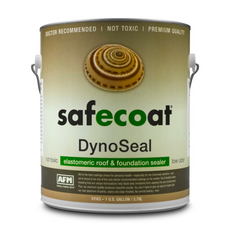
AFM Safecoat Dynoseal Roof and Foundation Sealer
$100.00 - $495.00
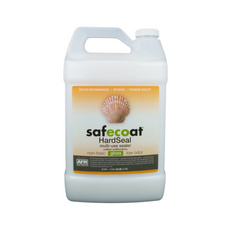
AFM Safecoat Hard Seal
$71.00 - $360.00
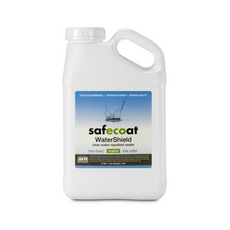
AFM Safecoat WaterShield
$65.00 - $320.00
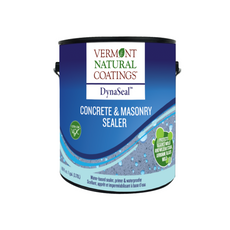
Vermont Natural Coatings DynaSeal Concrete & Masonry Sealer
$79.75 - $357.50
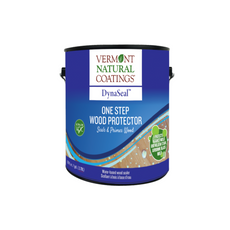
Vermont Natural Coatings DynaSeal One Step Wood Protector
$79.75 - $357.50
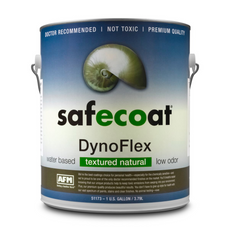
AFM Safecoat DynoFlex Textured Sealant
$81.00 - $396.00
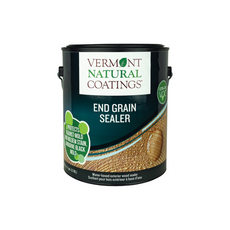
Vermont Natural Coatings End Grain Sealer
$79.75 - $357.50
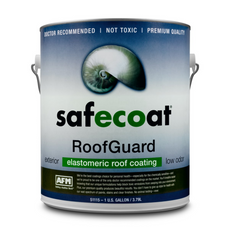
AFM Safecoat Roof Guard Roof Coating
$85.00 - $420.00
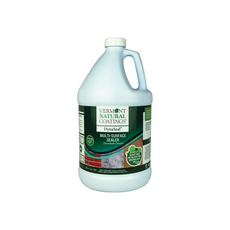
Vermont Natural Coatings DynaSeal Multi-Surface Sealer Concentrate
$138.40
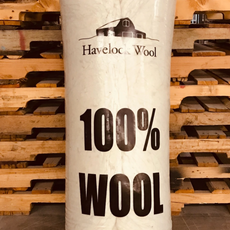
Havelock Wool Sheep's Wool Blown-In Insulation - Pallet (21 Bags)
$3,780.00
Tip #2 – Make Use of Historic Energy Efficient Designs
Many older homes, especially centuries-old homes, were initially built very well to stand up to their environment. It was also at a time when modern heating and cooling systems didn't exist. Instead, many homes incorporate 'passive' features, like balconies, awnings, and roof overhangs. These design features provide shade, and bright colors of paint to reflect light, helping keep them cool in summer. Many have thick, high thermal mass walls or chimneys that heat up slowly in the daytime, and release the heat at night when it is chilly.

Low-tech, 'manual' features that are part of a home's historical value can also continue to be beneficial. For example, exterior shutters to keep out sunlight on hot days. Operable attic windows opened in conjunction with ground-level windows to induce whole-house ventilation for cooling and fresh air.
Take a look at the historic design features of your older home and talk with your energy assessor about how to maintain them and make use of the benefits they provide.

Tip #3: Windows Can Be Repaired or Replaced
Windows are often not the most significant part of the problem of heat loss, but they can be substantial. Old, single-pane windows can lose a lot of heat, mostly through drafty air leakage if they don't have good seals or weather-stripping. They also lack energy-efficient features like double or triple pane, insulated spacers, argon gas fill, and low-emissivity coating.

You can work with the existing windows or replace them with new ones, and either way can save significant energy. The main thing to improve for existing windows is the air seal, which can be completed using weather stripping and caulking. Refurbishing an existing window saves on the embodied energy and materials. Some techniques can be done 'in-place' without having to remove the entire window. Simple methods from the US Environmental Protection Agency include:
- scrape and replace the exterior paint and glazing putty (sealant at the wood/glass connection)
- replace any cracked window panes
- remove paint build-up around the sash
- replace the sash cord and re-balance the weights (requires partial disassembly of the window and frame)
- fill cracks in the window sill with epoxy or wood filler
- install or replace weather stripping and caulk trim
- add heavy/insulated blinds or curtains
All these options can be do-it-yourself projects or done professionally by a local window repair contractor.

Another way to improve the energy efficiency of older windows is to add storm windows. A storm window is an extra window layer fastened to the outside of the window, for the winter season. They decrease air leakage, add a windowpane to reduce heat loss, and protect the main window from the weather.
Storm window frames are usually made of wood or aluminum and come in both standard and custom sizes to fit most windows. Some are even operable so that they can be opened in the summer months, rather than removed. Look for modern storm windows made with energy-efficient features such as low-E coatings.

Tip #4: Blown-in Insulation
Blown-in insulation is the most fruitful way to insulate wall cavities in an older home without affecting the appearance of a wall. The most common blown insulation materials are cellulose (made of recycled paper), or blown-in fiberglass.
Depending on the maturity of your home, it might not be possible to blow in much more insulation. This is especially so if the wall cavities are full of early forms of insulation like sawdust, newspaper, or construction waste. Some walls also have double plaster layers, or even brick in the wall cavities - both historical methods for making walls more solid. Your home energy assessor and an insulation contractor can check and figure out how much more insulation can be added.
Thermal imaging can also help show you the areas in the wall that the insulation did not reach. These will show up as dark purple cold areas in a thermal image. These uninsulated cold pockets lose your hard-earned heat energy. If left unaddressed, it can cause water vapor to condense in the walls, which can lead to mold or mildew. When you know where they are, you or your insulation contractor can fill them in with insulation.
Where there are walls finished with lath and plaster, avoid packing blown-in cellulose too densely, because it can break through the plaster, especially in cracked or weakened areas. Reinforce any cracked areas you find before insulating the wall.
Last but not least, when considering blown insulation, be cautious of the electrical wiring in the house. If you have the old knob-and-tube wiring, it does not meet the current electrical code and can pose a fire hazard. It should be replaced with new electrical wiring before the walls are insulated.

Tip #5: Add a New Layer of Insulation
Where blown-in insulation is not possible, or if you want to go further, you can also add a new layer of insulation to the interior or exterior wall surfaces. It makes the walls thicker, which is usually more expensive, but it's also more productive as an insulation strategy. It covers the framing wood in the wall, reducing thermal bridging. Adding a continuous layer of insulation around the outside will also reduce air leakage.
If you have a heritage building and want to add insulation to the outside, you will probably have to make the exterior look the same again after adding insulation. It's easy to install a similar historically-appropriate kind of siding over your new insulation. Ask your local authorities in advance if you want to insulate the exterior of a heritage property.

Conclusion
There are many ways to make your older home more sustainable. Insulation and air sealing are often the best first steps. Despite popular opinion, replacing old windows with new windows is not usually the most cost-effective thing to do first. We recommend starting with a home energy assessment to help guide you through the decisions and find a path that works for you.
Disclaimer: This article does not constitute a product endorsement however Rise does reserve the right to recommend relevant products based on the articles content to provide a more comprehensive experience for the reader.Last Modified: 2020-07-14T15:03:53+0000Article by:
Dane George
Dane George holds a Bachelor of Civil Engineering and a Masters of Applied Science in Mechanical Engineering from Dalhousie University. He has three years of experience working with residential contractors with a focus on energy efficient renovations, and has worked with the Clean Foundation as a Certified Energy Advisor conducting energy audits of homes. Most recently, his graduate research involved analyzing electricity consumption patterns. Dane has also prepared and delivered workshops on home energy sustainability, and is currently teaching Renewable Energy and Energy Efficiency at Saint Mary’s University in Halifax.